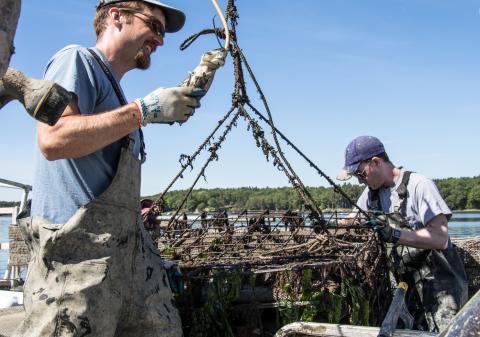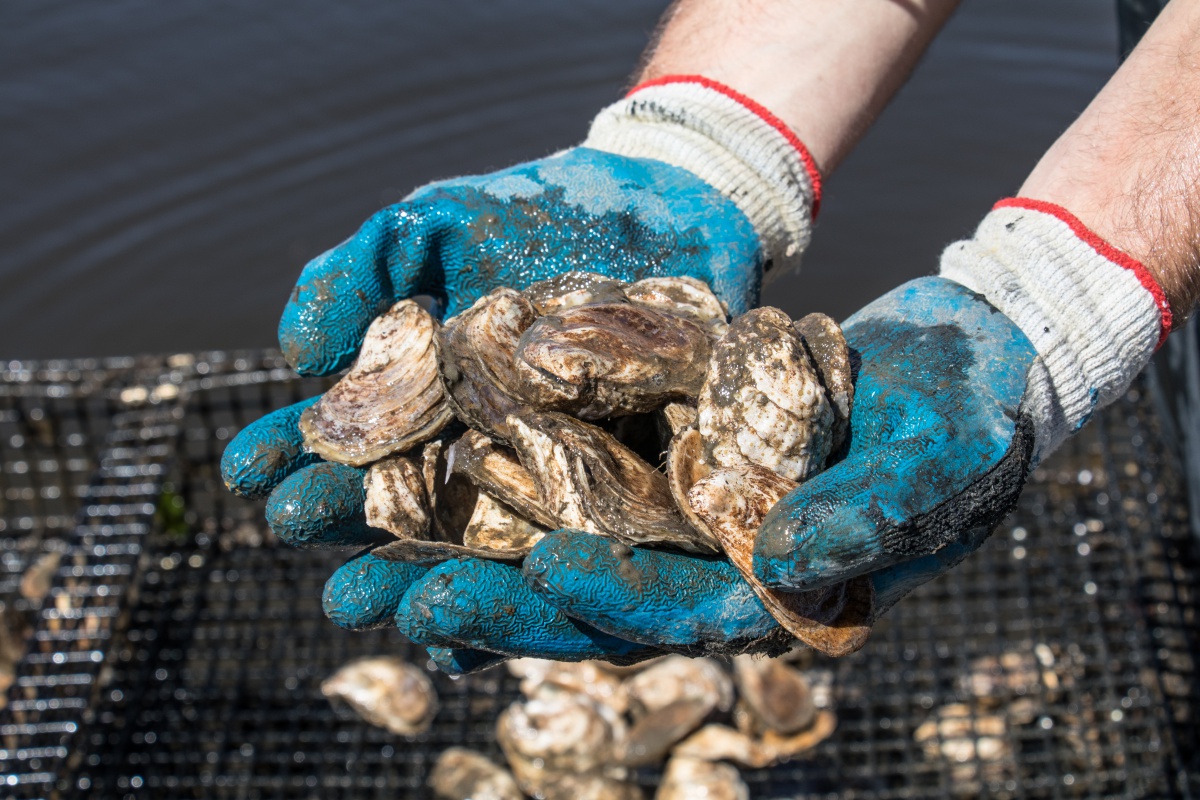In the Bag

Jay Baker, owner of Fat Dog Shellfish Company, shows a visitor around the dock where he and his team haul up seaweed-covered cages of oysters. "The name of the game in oyster farming is moving the line," says Baker. That means opening the cages, wiping the oysters clean of mud and pests and then moving them to other cages and lowering them to the ocean floor to "grow out" until they’re large enough to harvest.
This is oyster farming in the Great Bay Estuary, where 14 farms have popped up in less than a decade. Thanks to assistance from N.H. Sea Grant and UNH Cooperative Extension, many of these growers receive professional advice and training that's helped them establish and expand their businesses.
The state's oyster farming industry is young but growing. Great Bay-grown oysters are popular with the region’s restaurants and retailers.
They're environmentally friendly, too. One oyster naturally filters about 30 to 50 gallons of water a day, removing the excess nitrogen that contributes to water pollution and eating algae and organisms harmful to the ecosystem.
Baker is among a group of New England oyster growers who participated in the Northeast Aquaculture Research Farm Network, a multi-year project directed by Extension marine aquaculture specialist Michael Chambers to test and demonstrate new aquaculture technology and practices. Chambers' research addresses the array of challenges facing local oyster farmers, from regulations to crop management to consumer appeal. Farmers have also received help with identifying diseases and predators that affect oyster growth.
One technology tackles all three of those areas. Current regulations limit oyster grow-out in the estuary to "bottom culture." Farmers must grow oysters on the estuary's floor, where space is limited and oysters are susceptible to predators. On Baker's farm, however, Chambers' team installed an oyster flip bag system. This surface-culture method uses bags of oysters suspended at the water's surface, rolling over as the tide comes in and out.
 Bringing oyster cultivation closer to the surface yields many benefits, Chambers says. The tumbling action and warm, nutrient-rich surface waters serve the oysters well. The bags also help shape the oysters, giving them a deep cup that makes them appealing to consumers and increases their market value.
Bringing oyster cultivation closer to the surface yields many benefits, Chambers says. The tumbling action and warm, nutrient-rich surface waters serve the oysters well. The bags also help shape the oysters, giving them a deep cup that makes them appealing to consumers and increases their market value.
"The flip bag experiment really addressed product quality," says Baker.
Surface-culture research also offers a way for the state's oyster farming industry to expand. "We could increase the area where oyster production occurs," Chambers says. "As we look to the future, there's not a whole lot of space left (in the estuary) to grow shellfish."
The flip-bag research also gives farmers the data and experience necessary for working with regulators to create surface-culture regulations. "It will probably take one farmer to break the ice," he says. If these methods take off, it could result in more oysters growing in the estuary. That means busy farmers, happy consumers, and healthy waters — an example of the briny bivalves' big influence on the bay.
This story originally appeared in the 2017 edition of Radius.

